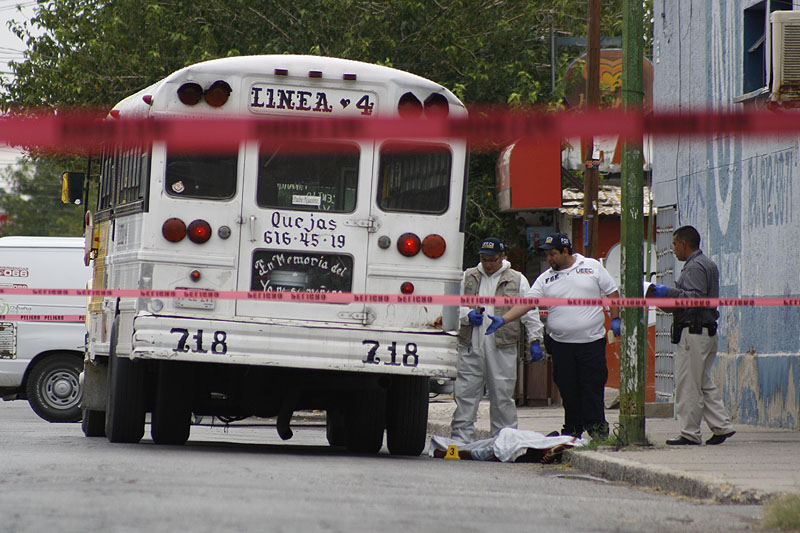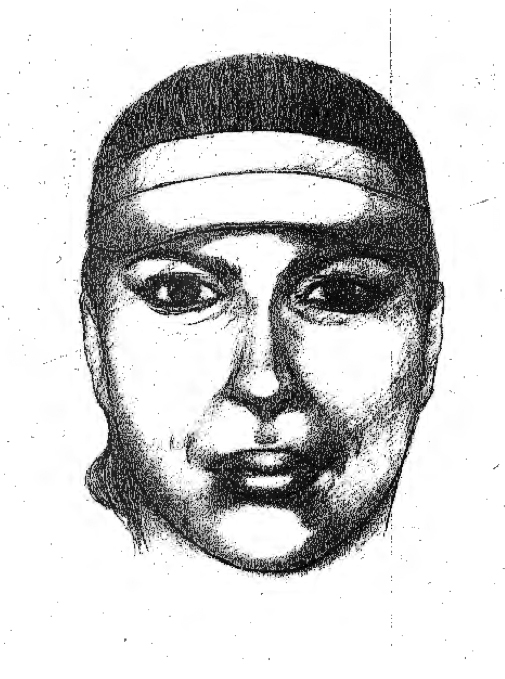MEXICO CITY – Ciudad Juarez has long been a city in need of a superhero, a Gotham-on-the-border where thousands of murders have gone unpunished in the past decade and so many women are preyed upon that statisticians put them in a category of their own, “femicides.”
But the shadowy female assassin who has terrified the city’s bus drivers and captivated Mexico for the past week can hardly be viewed as a force for good.
She struck first on Aug. 28, at 7:45 a.m. Prosecutors say a middle-aged woman with blond hair or a blond wig boarded a bus along a major city thoroughfare, pulled out a gun and, without saying a word, shot the driver in the head three times.
She killed her second victim at 8:20 a.m. the next day along the same bus route. This time, she boarded with other passengers, rode for several blocks, then approached the driver from behind and raised her gun as the bus came to a stop. “You guys think you’re so bad, don’t you?” witnesses heard her say.
Then, bang.
The driver slumped in his seat. The woman fled.
“We thought the first one was a crime of passion,” said Arturo Sandoval, spokesman for the Chihuahua state attorney general. “But after the second one, it began to look like a case of revenge.”
A day after the second killing, local reporters received a communique signed by “Diana, huntress of bus drivers,” a name adopted from the Roman goddess whose statue towers over traffic in downtown Mexico City, her nude figure armed with bow and arrow.
The message said the killings were meant to avenge sexual assaults by bus drivers on women who toil long hours at the city’s assembly plants, or maquiladoras.
“We work long hours into the night to support our families, and we won’t stay quiet anymore in the face of these acts that fill us with rage … a lot of people know what we suffer, yet no one defends or protects us.
“I am an instrument of revenge for several women,” the message continued. “Society may think that we are weak, but in reality we are brave and if we are not respected, we will make ourselves respected. Juarez women are strong.”
State prosecutors say they can’t confirm the authenticity of the message. But they have ordered armed plainclothes officers to ride city bus routes, and they’re trying to determine whether the two victims were targeted or picked at random.
Violence in the city has fallen dramatically since 2010, when warring drug cartels made Ciudad Juarez the world’s murder capital, with more than 3,000 slain. Killings have dropped more than 80 percent, but most analysts attribute the turnaround to one drug gang’s victory over the other.
Criminal investigations and prosecutions remain weak — one reason many bus drivers in the city have been too scared to return to work since the slayings.
Marisela Ortiz, a rights activist who fled Ciudad Juarez after receiving death threats and gained asylum in the United States in 2011, said the killings claimed by Diana are seen as comeuppance by many in a country with a long history of vigilante violence in the absence of an effective criminal justice system.
“Juarez is a place where criminals rape and kill women because they can. So there are a lot of women, and mothers and fathers, who applaud that someone is trying to avenge these crimes,” she said.
“But violence only generates more violence,” Ortiz cautioned. “We need justice, not revenge.”
At least 800 women have been slain or disappeared in Ciudad Juarez in the past two decades, according to local media. Rights activists put the number even higher.
Send questions/comments to the editors.




Success. Please wait for the page to reload. If the page does not reload within 5 seconds, please refresh the page.
Enter your email and password to access comments.
Hi, to comment on stories you must . This profile is in addition to your subscription and website login.
Already have a commenting profile? .
Invalid username/password.
Please check your email to confirm and complete your registration.
Only subscribers are eligible to post comments. Please subscribe or login first for digital access. Here’s why.
Use the form below to reset your password. When you've submitted your account email, we will send an email with a reset code.